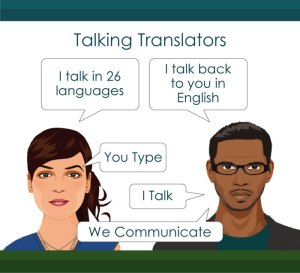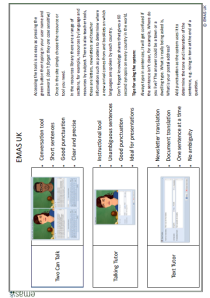Because YOU need value for money and real results fast we have spent a lot of time looking at a new ways to helps normal everyday individuals, who are not linguists, converse with patients, clients, customers, parents and learners.
Our society is changing, states a recent press article We have tweaked some of the definitions associated with “predictable” terms.
This got me thinking as often it is the linguists, new arrivals, diversity and equality units that speak to us despite being able to speak many languages themselves and often cannot see it from the non-linguists point of view e.g. when there is no one available yet they still need to communicate with someone.
“Accuracy” is a good example. Before, we might have defined “accuracy” as “a thorough process including quality assurance, fact checking and overall correctness.”
The modern day definition of accuracy might come with a contextual caveat, though–“a thorough process including quality assurance, fact checking and overall correctness as time allows.”
In journalism, this digital age change is often referred to as the dilemma between accuracy and immediacy–is it more important to inform the public right away and risk inaccuracy, or take more time to provide an accurate product?
I think this is probably true of communication and not just journalism, as we all move around more and access information from further afield. Hence the need to be more able ourselves to be proficient in getting what we need translated to the best accuracy possible within the timelimits given. For example – If its in the middle of the night when there is no person available, or for areas where it is too costly to have a person or where you need answers to question immediately, e.g. at Accident and Emergency, local disaster or accident we offer solutions to support those on the scene.
The article also suggests ways to ensure that the translations you receive are not only delivered in a quality, timely manner, but also with accurate meaning.
Clients, especially in the area of life sciences, often inquire about accuracy assurance. “OK, we’ve received our translation and it looks great, but how do we ensure that it is accurate?” they ask.
Know who you hired. You can avoid the retroactivity and second guessing that may come after delivery if you have conducted a thorough language service provider search before you even have anything translated. – At EMASUK our written material i.e. resource library and books, is supported with a wealth of translators that work in schools, hospitals or social services to ensure that they are accurately reflected in up to date workplace situations.
Be willing to provide support. There will be fewer issues with terminology if you either provide your translation service with previously translated materials (the quality of which you like) or request that a glossary is prepared and approved before translation begins. Appoint someone in your organization who will be available to consult with the translators, explain a term or the ins- and outs- of a process. – At EMASUK we always work with the organisation to provide as much personalised support as possible but also develop tools and resources to allow individuals to support themselves in emergency or day to day activities that are generally unaccountable for.
Back-translation as a verification tool. Many users of translation services still verify translation using back-translation. It is usually the case in case of products subject to compliance verification or certification (FDA, IRB, etc.). Your translation provider should know how to ensure the independence and objectivity of such process. Alternately, you might request assistance of a third-party service.- At EMASUK the technological translation tools themselves have reverse translation buttons allowing you to check it out for yourself in seconds.
Value accuracy. If you’re reading this, chances are you already think accuracy is important. When we suggest that you “value” accuracy, we are really saying, “do not buy into the idea that you have to sacrifice accuracy for immediacy.” The two are not mutually exclusive; actually, they can be partners, depending on the definition of immediacy. If by “immediacy,” one means ” a matter of hours,” there is a chance that accuracy could suffer. If “immediacy” means “a couple days,” accuracy will likely thrive, especially when prioritized.- Much as I agree with that there are times when accuracy needs to be sacrificed for the people involved just to communicate for example where a person is bleeding profusely, at an accident site, or in schools where teachers need to take charge of an incident. That is why at EMASUK we have developed an innovative 22nd Century model which uses technology for immediacy, and written people translated text for books and written resources.






